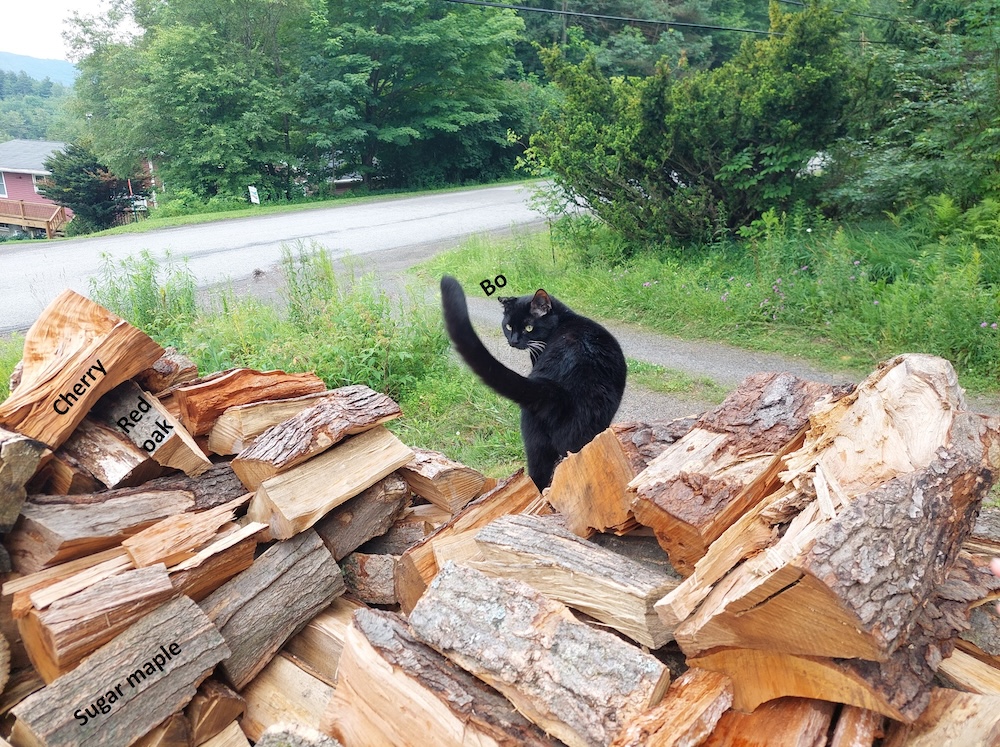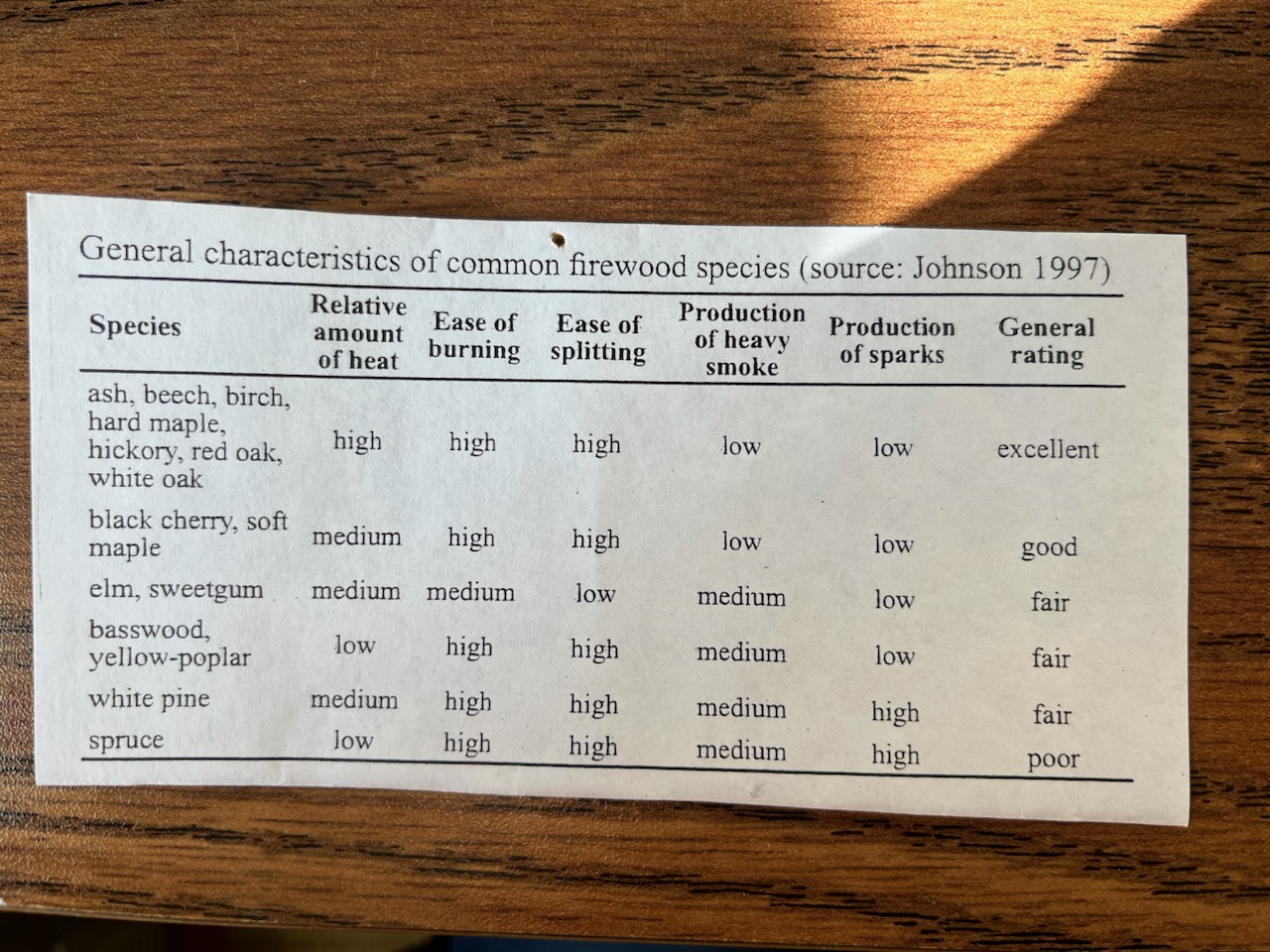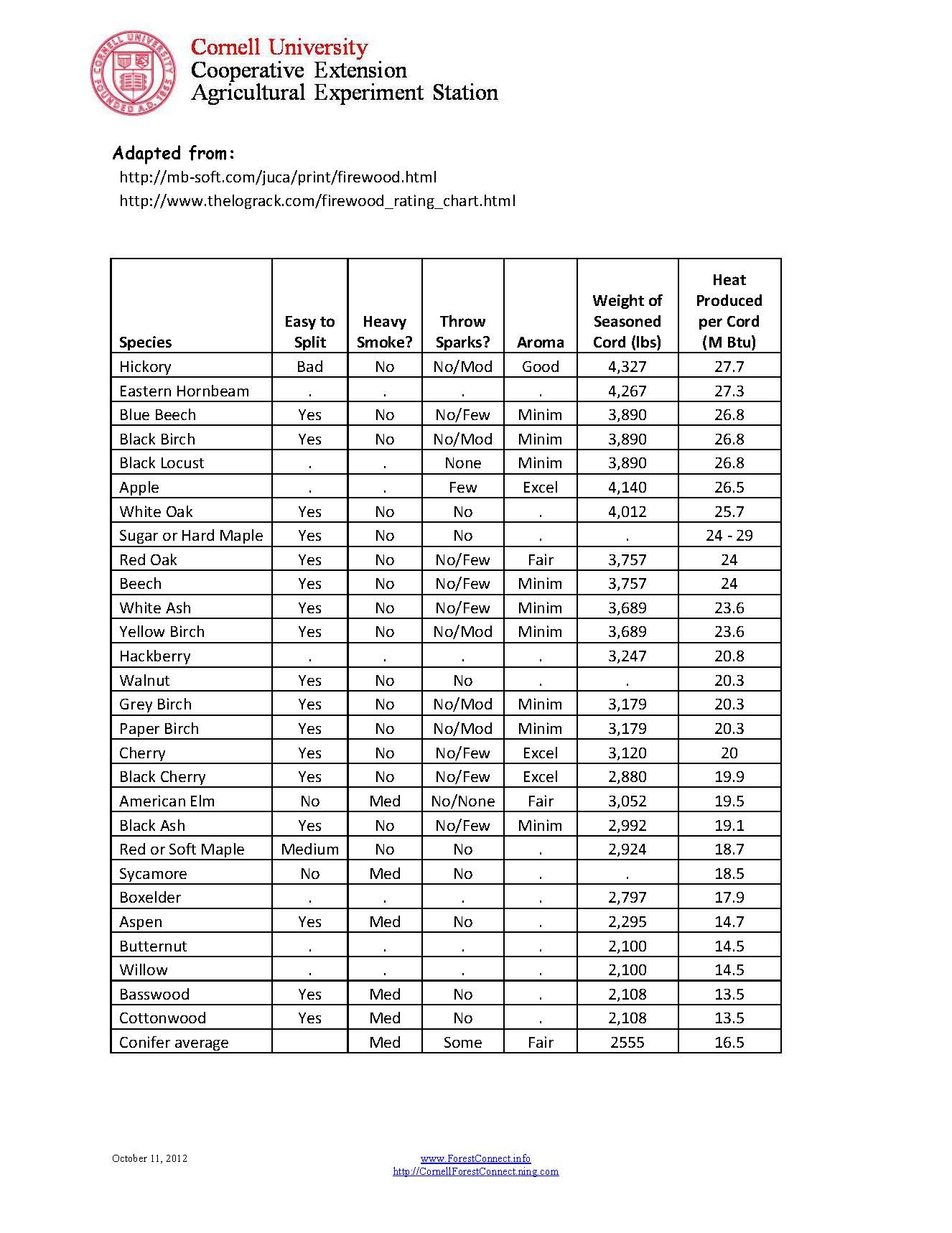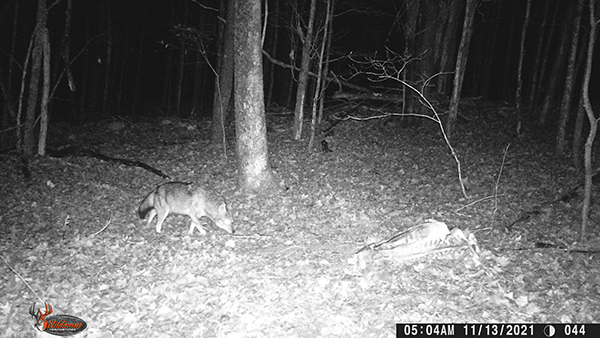For the last two heating seasons, I have used a cordwood burning fireplace insert to heat our house. While I’m not a veteran wood stove user, I have tended enough fires to develop some preferences in the wood I burn. This blog lists my favorite firewood species and why.
At the end, I’ll also provide some helpful literature about buying, storing, and drying firewood, as well as general qualities of different firewood species.
Black cherry is my favorite. I love how it smells when you split and burn it. Black cherry splits easily and dries relatively quickly. For example, I have had success burning it after just 6 months of drying (aka seasoning) outside in a wood stack. I have a soft spot for black cherry because it happened to be the first big tree I ever cut up for firewood.

A piece of black cherry firewood.
Hard maple (sugar maple) is another good one. It is denser and harder to split, but in my experience, it also dries quickly and provides longer burn times than cherry.

Wood grain in a piece of hard maple.

The silhouette of a familiar (to me) cat in the heartwood of a sugar maple round.

Beatrice Furbrown (foreground). Bo Furbrown (background).
White ash is another that splits easily and seasons quickly, but I have been told that well-seasoned white ash can burn up quickly in the wood stove.
Red oak is one of my favorites to split. When I strike it with the maul, the round splits and stays on the chopping block, which helps reduce the number of times I have to bend over and pick up the pieces. This is the most common back killer associated with splitting wood in my opinion. Also, I love the smell of freshly split oak. I think the only negative is that it takes a long time (1-2 years) for red oak to season. I learned that 7 months of drying time is not quite enough, but it is manageable. My solution was to mix red oak with a healthy amount of black cherry or hard maple. My ratio was 3 or 4 pieces of cherry or maple to 1 piece of oak. For the sake of less smoldering and subsequent creosote buildup in your chimney, your best bet is to just set the red oak aside until it’s good and ready to burn.

Bo Furbrown on a stack of common firewood species in my area (Stamford, NY).

A firewood characteristics table, including info about wood density and heat produced by species. From Peter Smallidge’s article, Estimating the Volume of Firewood in a Tree.

In doing a bit of research for this article, I came across the following helpful resources:
- A Cornell Cooperative Extension (CCE) article with tips about buying firewood.
- Another CCE article with tips about storing firewood.





